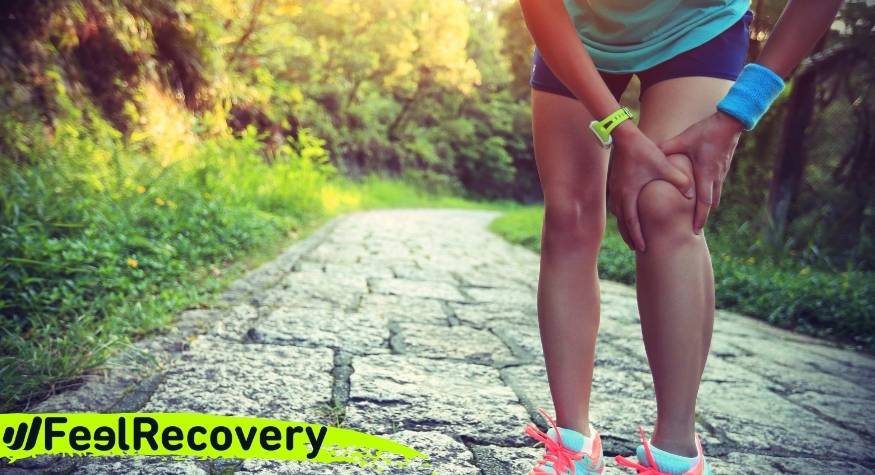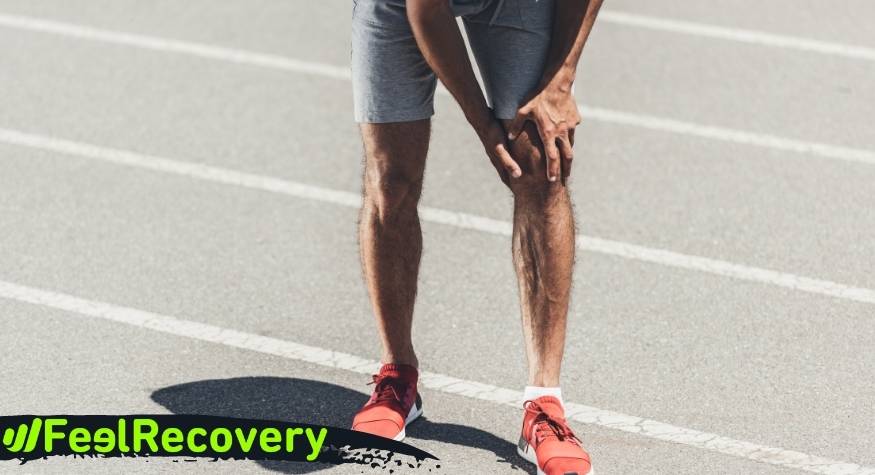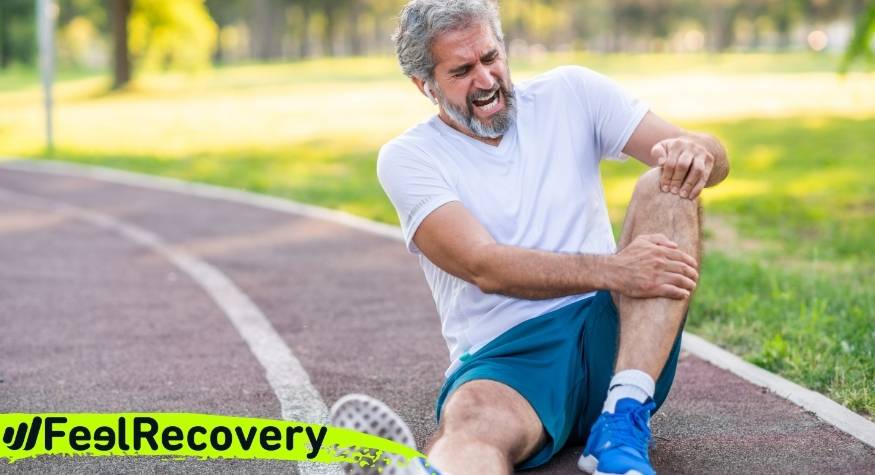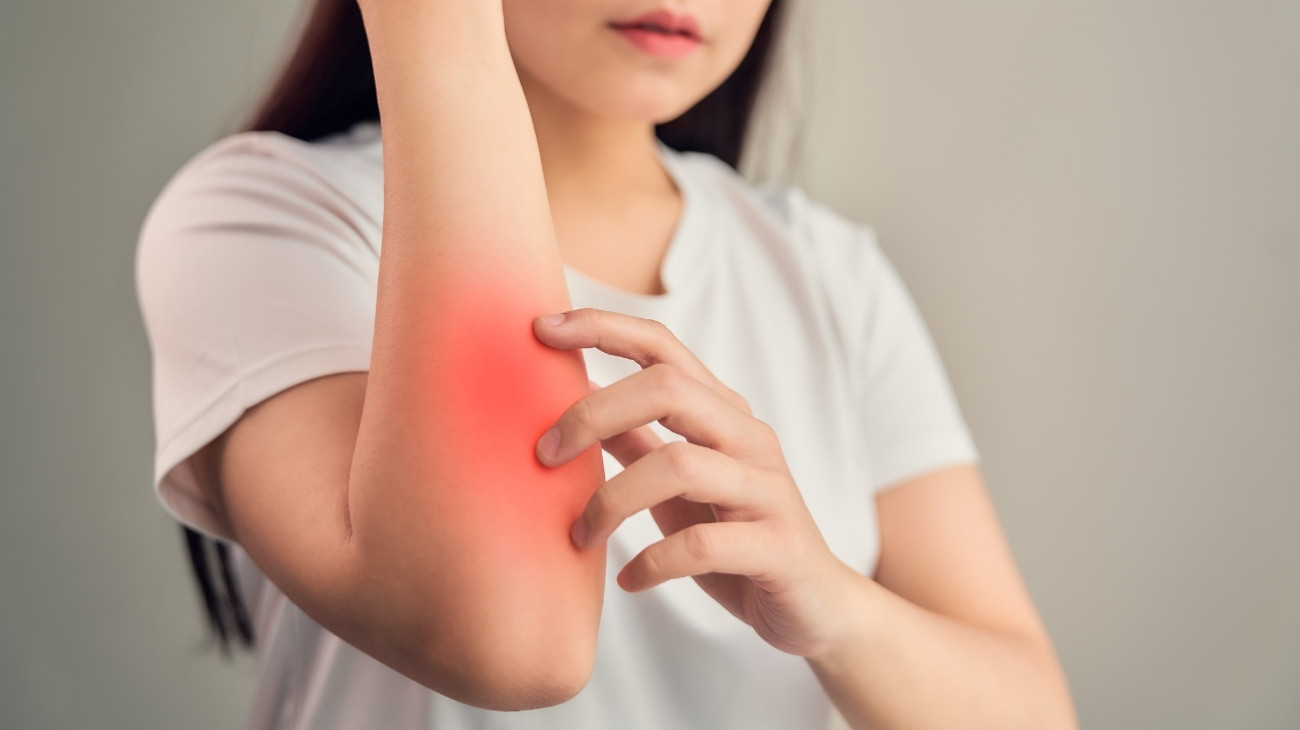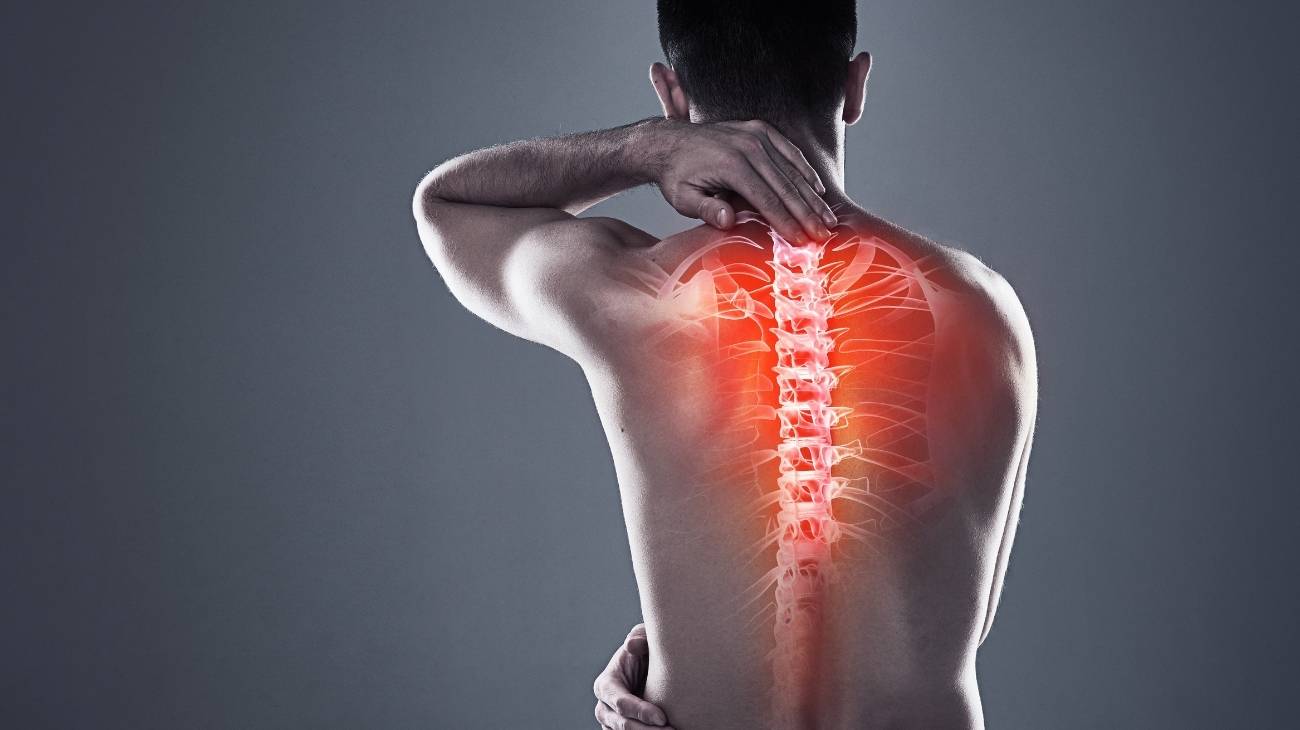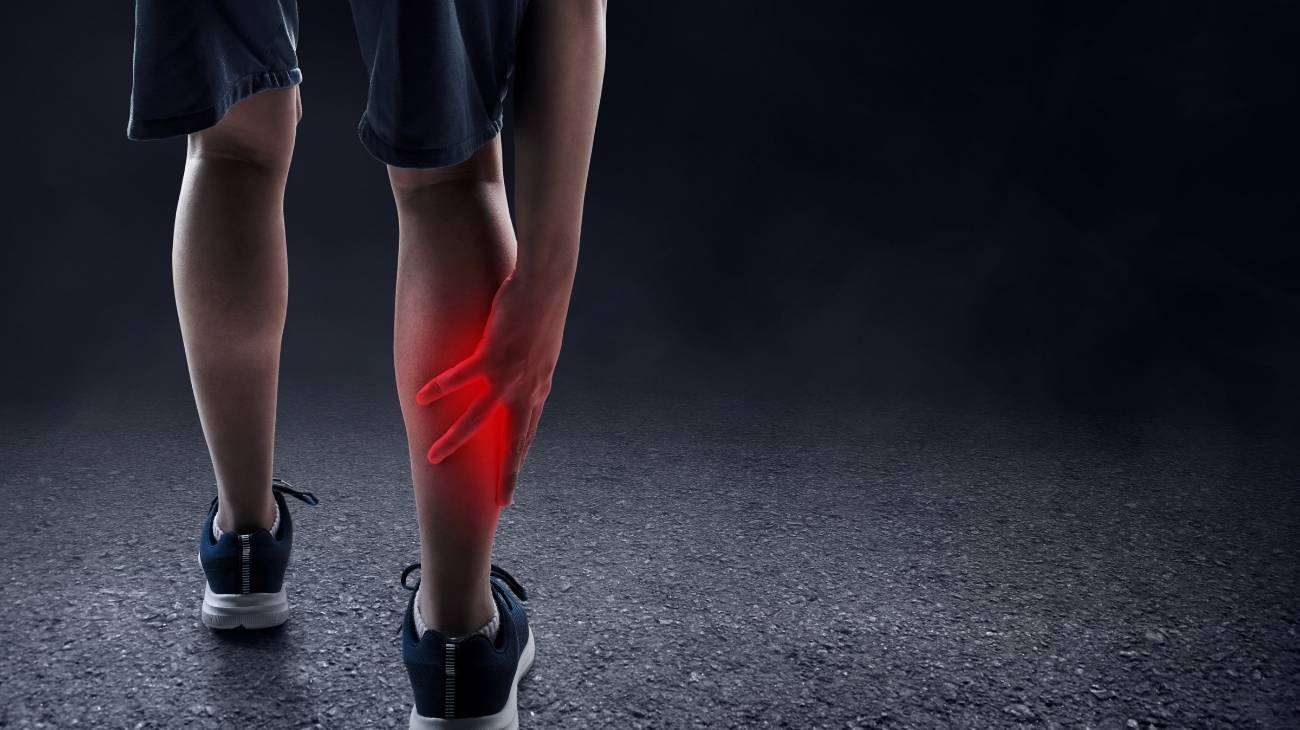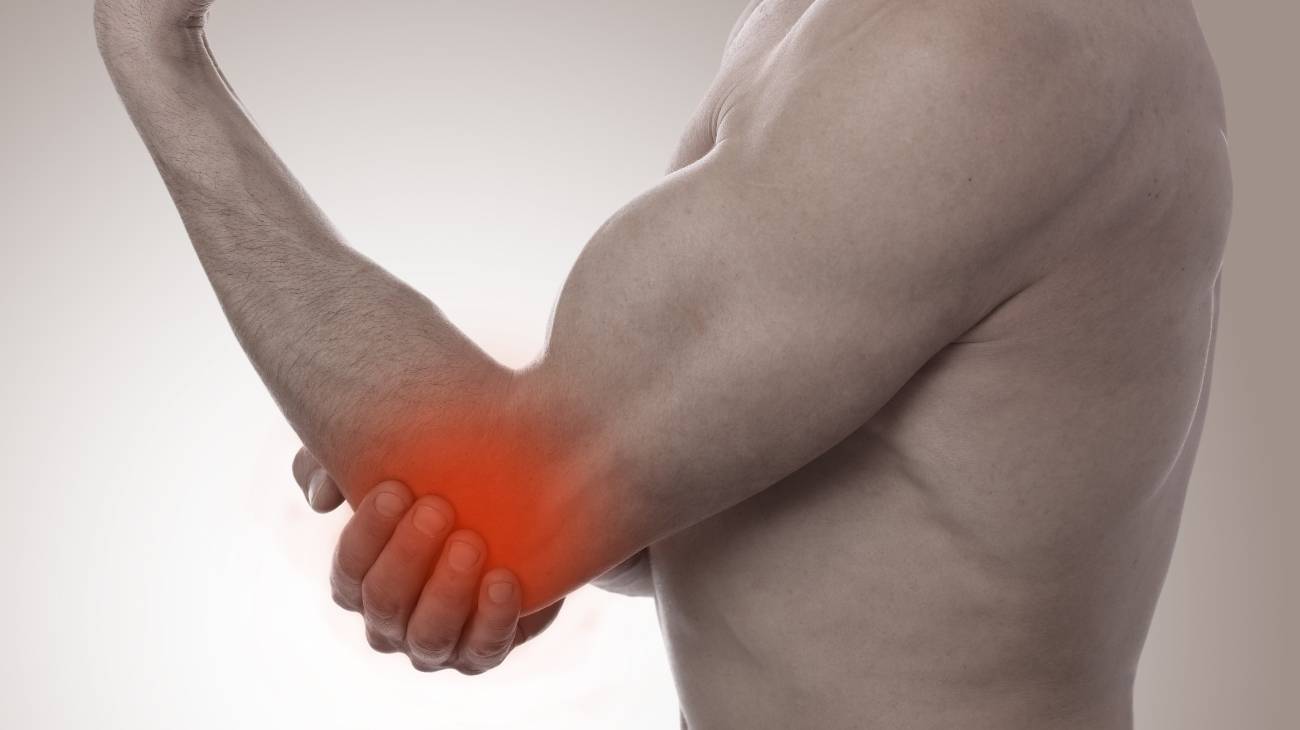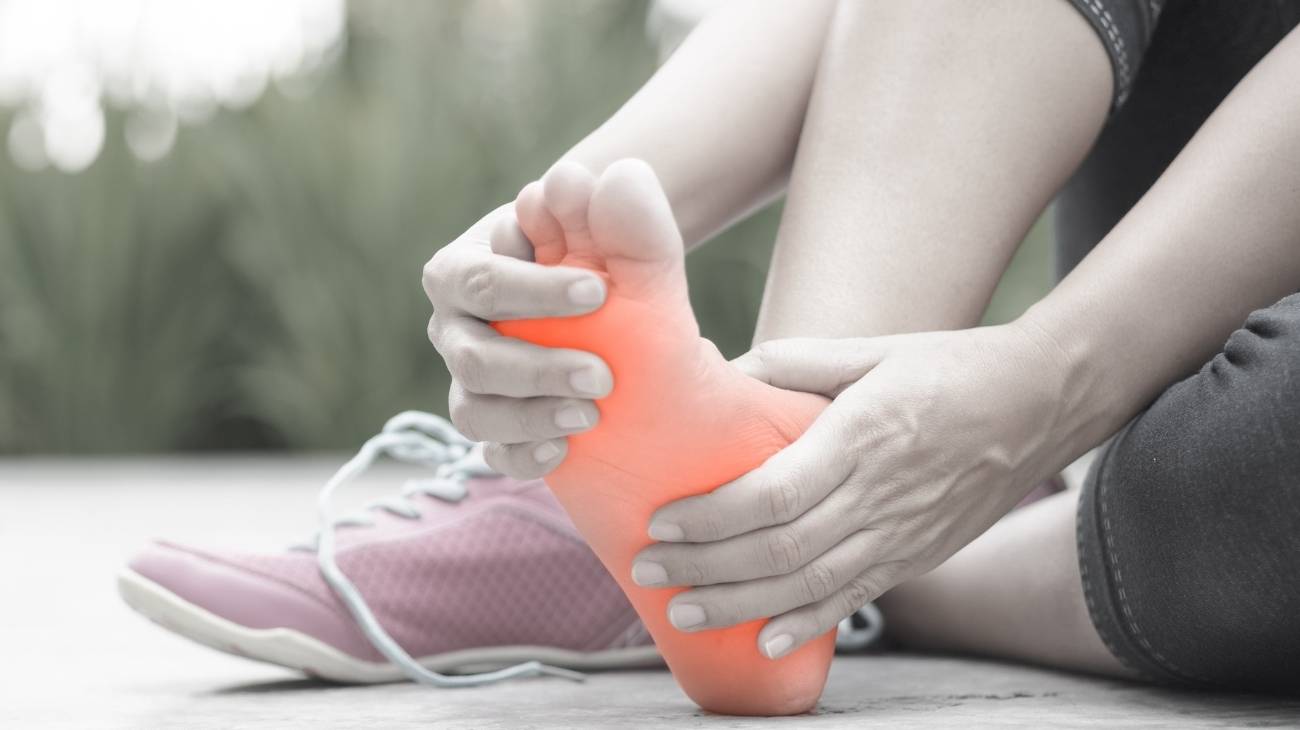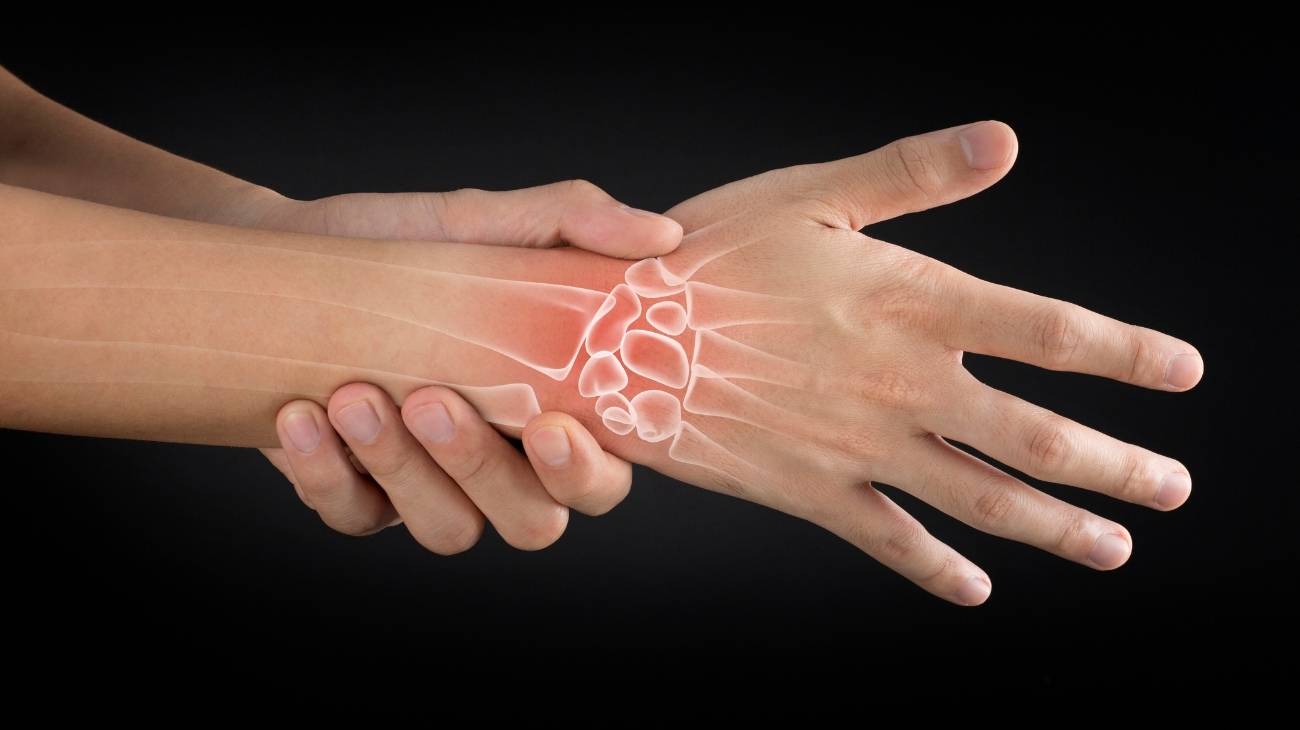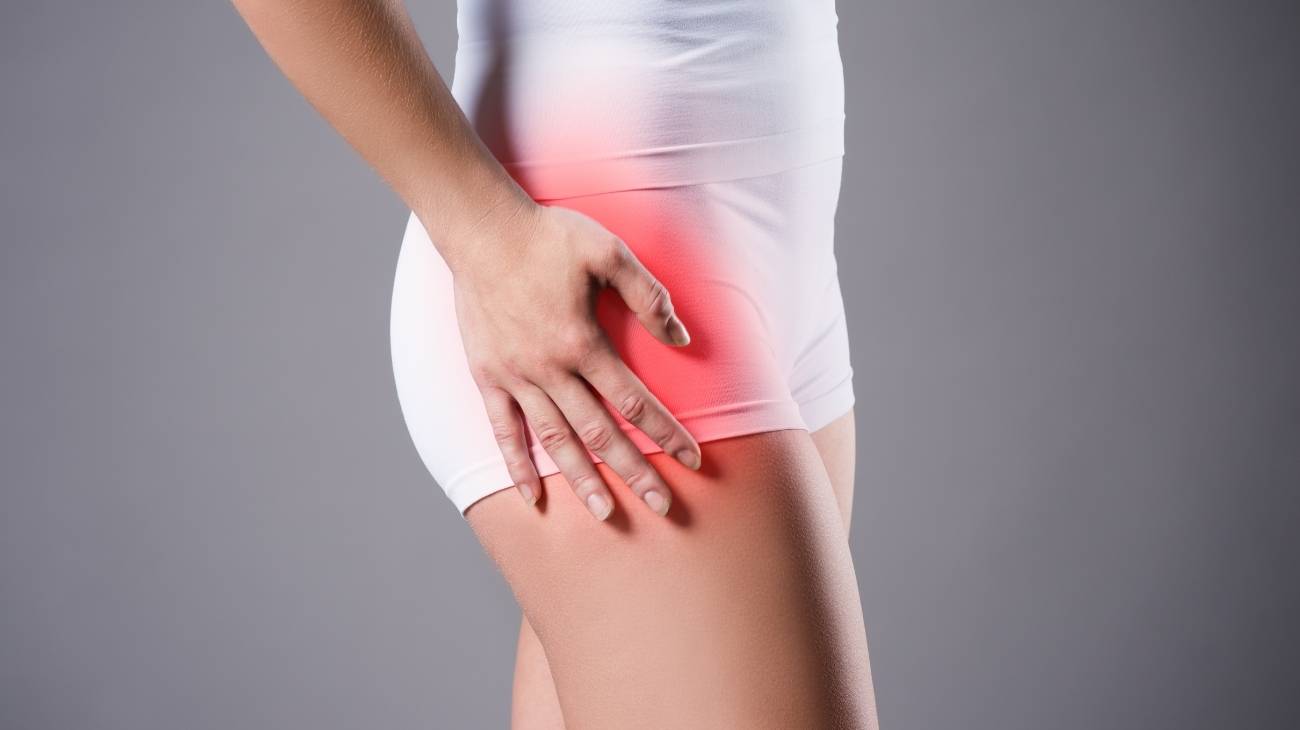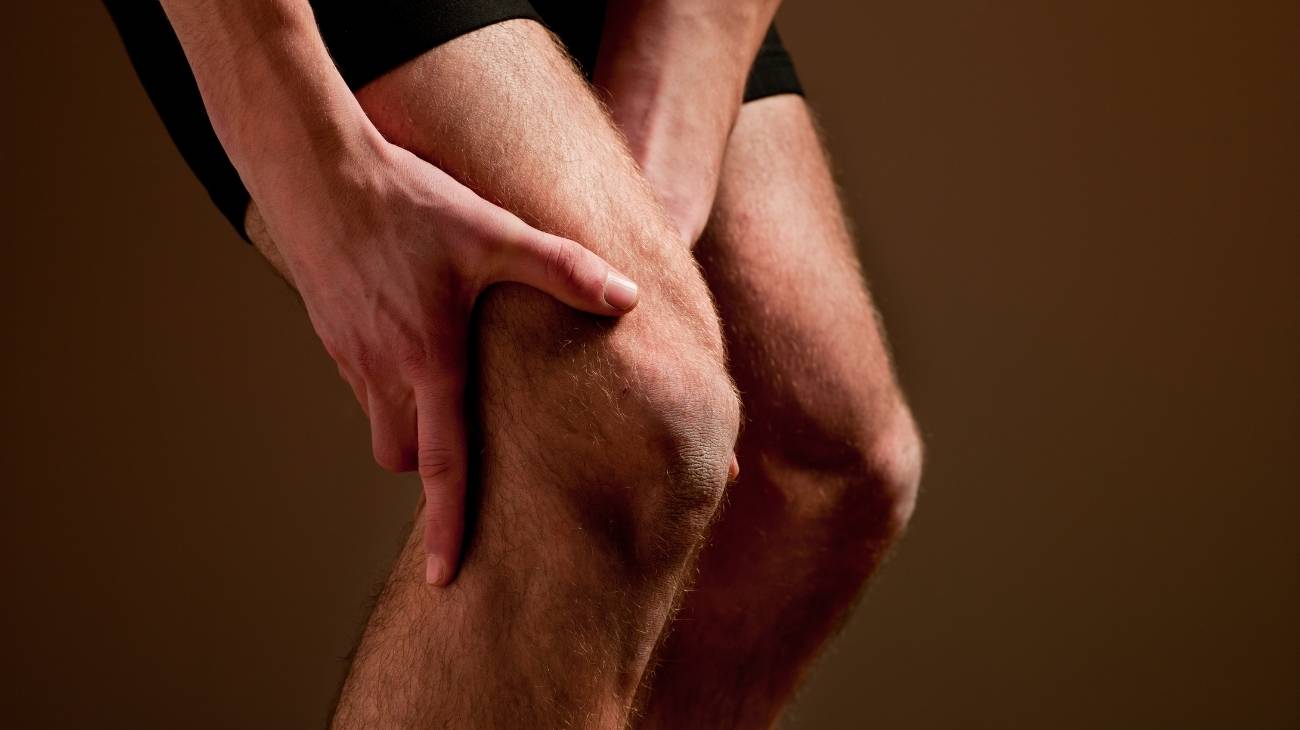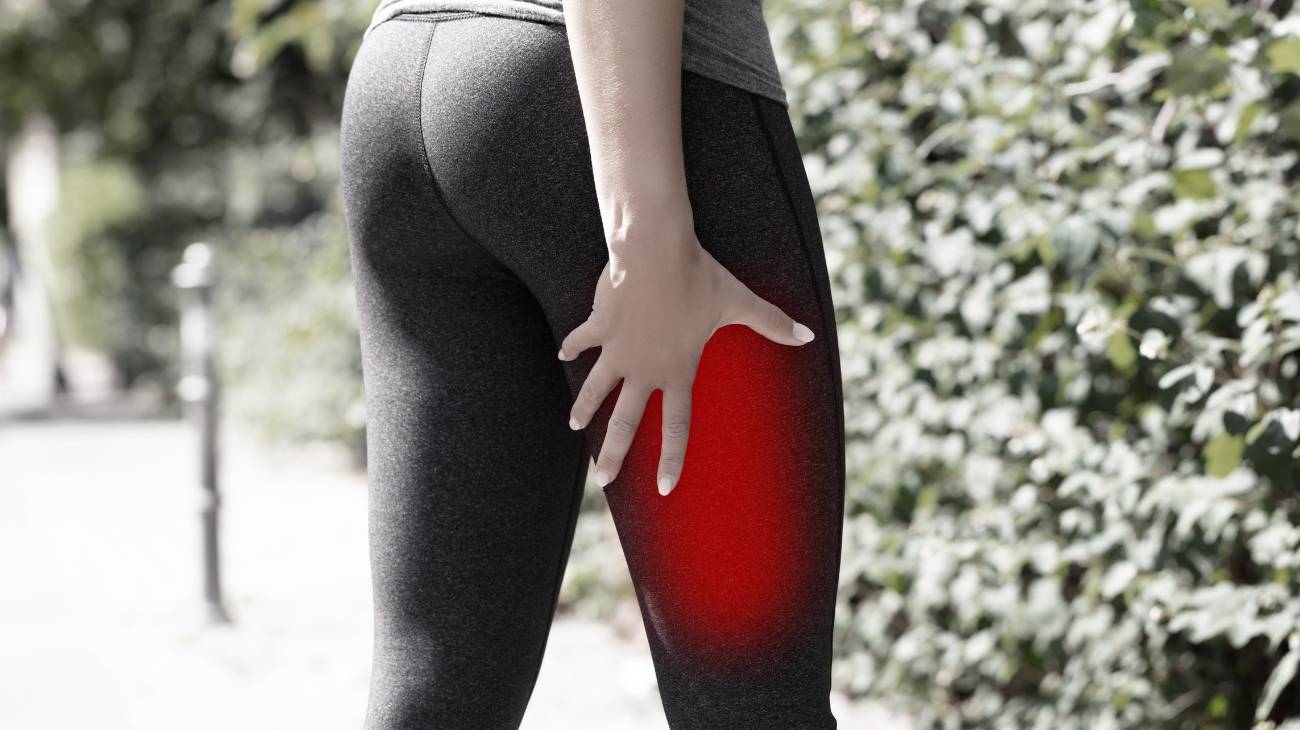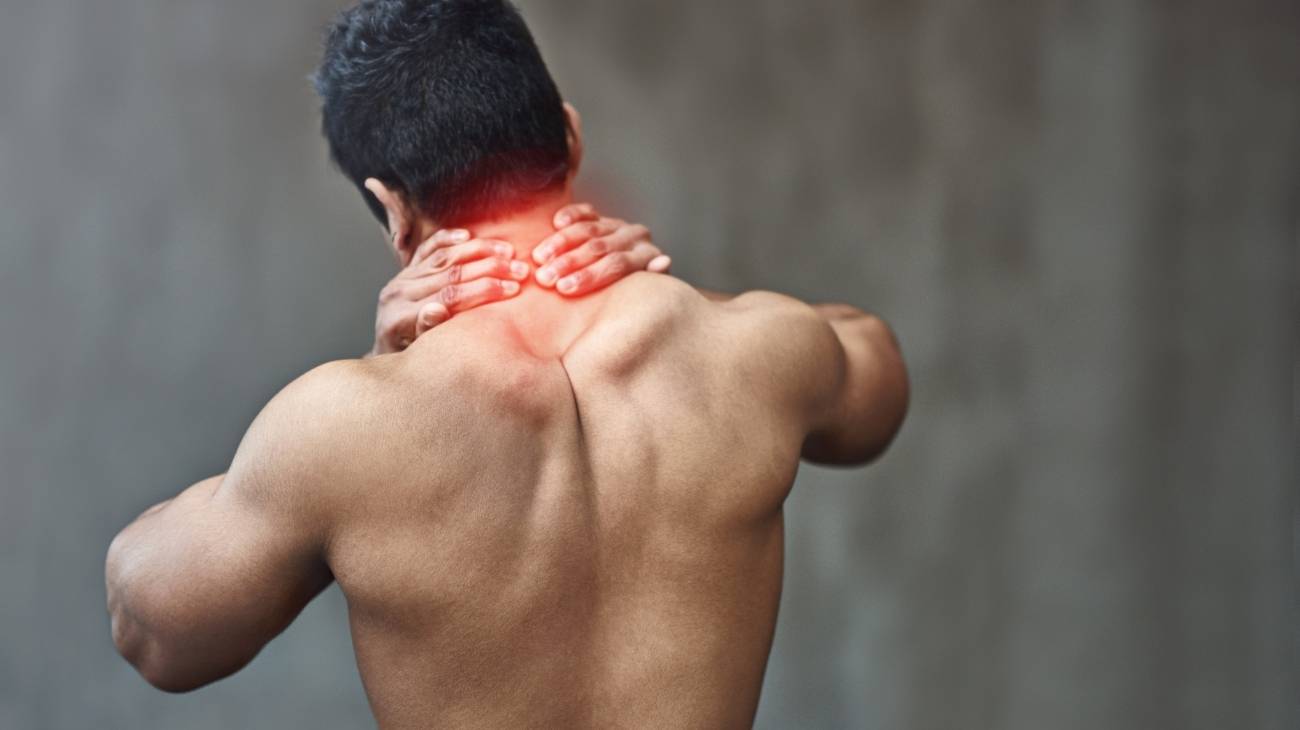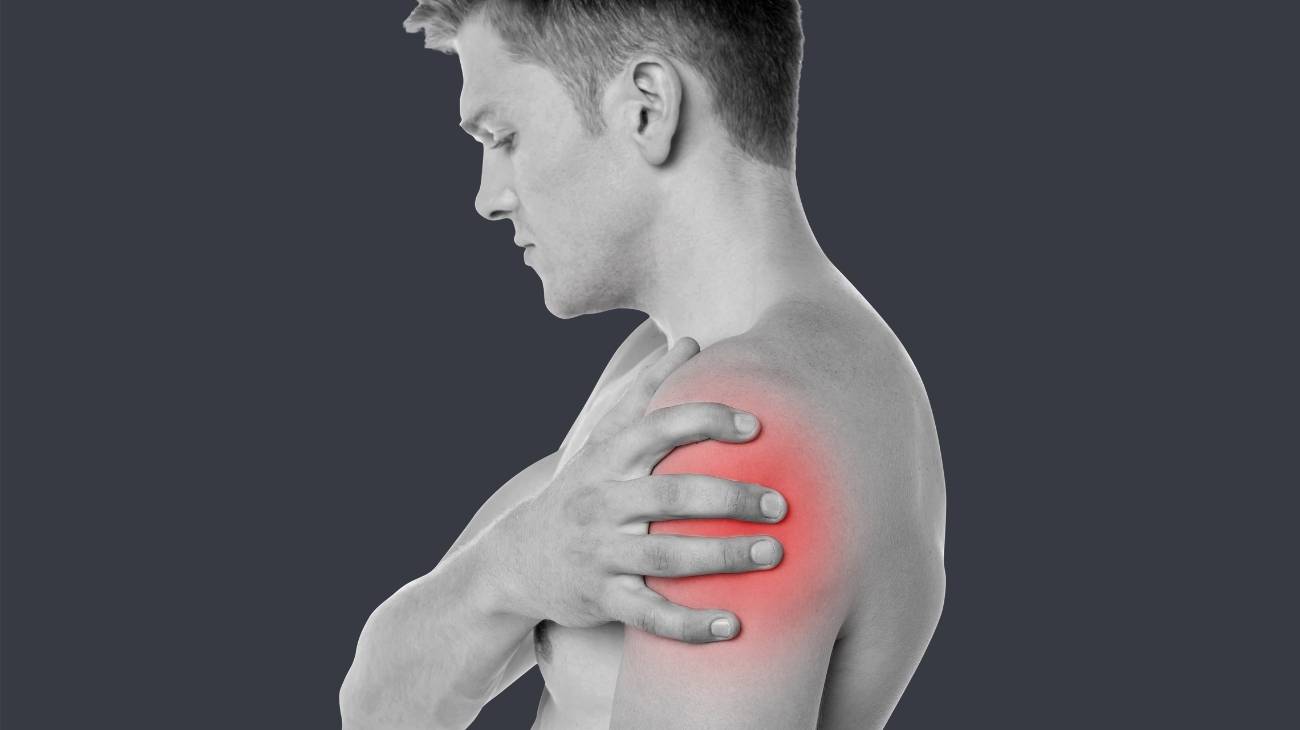When we talk about the knee, we are actually referring to two compound joints because there are three bones that are joined together: the kneecap, the tibia and the femur. It is the joint that provides the greatest stability to the person when walking, jogging and running and is therefore susceptible to injury.
We will show you what the most common knee injuries are, the main reasons why this joint hurts, what symptoms to look out for and how to apply the PRICE therapy as first aid. And in the event of an injury, here is a list of the best products for a better recovery.
What types of knee injuries can we suffer?
Any type of injury is classified according to its severity and impact on the body. The ailments are usually caused by muscle strain overload or sedentary lifestyles, which cause the soft tissues to be inactive and unprepared for sudden physical exertion.
Muscle fatigue
It is common for the body to respond to excessive physical activity with muscle fatigue, weakness and increased body temperature in the joint. In these cases, it is advisable to take a rest for the recovery of the fibres, accompanied by good hydration and nutrition.
When physical activity continues at a moderate intensity and the muscle is still fatigued, it is likely that the stress generated by the activity will be put on the tendons and ligaments, so a major injury may occur.
Sprains
If the leg makes a sudden excessive rotation while the foot is fixed to the ground, a sprain occurs, affecting the mobility of the knee joint. This is followed by an inflammatory process that causes excessive pain and deformity of the knee.
During a sprain, one or more ligaments are stretched to the point where their structure is torn. If it is a grade III sprain, it requires surgery to repair the affected ligament. For grade I and II sprains, ice, rest and compression will be sufficient to heal.
Tears
These can occur at the muscle level and in the ligaments that cover the joint. When the person does not do any sporting activity, tears occur after sudden and abrupt movements that strain inactive tissues caused by sedentary lifestyles.
A tear can be partial, involving injury to some fibres, and total when the tissue is completely ruptured. Excessive stretching of the tissue results in a tear. Depending on the severity of this injury, surgery may or may not be mandatory.
Damage to the fibrocartilage
The fibrocartilage part of the knee is called the meniscus. Each knee has two menisci and their function is to cushion movement and impact to prevent the bones from colliding with each other during bending, extension and during movements such as walking and jumping.
If the menisci are injured, you will feel swelling in your knee and severe pain that is worse when you try to rotate your torso and the knee itself. In most, if not all, cases, surgery will be required to repair the torn tissues.
Bursitis
The knees also have bursae, which are sacs filled with synovial fluid that serve to prevent internal friction between the bones. When this bursa receives a hard blow or is worn down by intense physical activity, this part of the joint becomes inflamed. If rest and complementary therapies do not solve the problem, a drainage procedure is needed to expel the excess fluid from the knee to relieve the pain.
Torn ligaments
Although ligament injuries are often associated with muscle fatigue, the ligaments themselves are also injured through wear and tear due to repetitive and intense movements. These injuries are very common in sports. Another reason can be severe trauma to the knee, damaging its ligaments.
The anterior cruciate ligament is the most commonly injured for sporting reasons. If you have this injury, you lose stability when walking, running and jumping, and the pain and joint inflammation intensify when you continue the activity. A trip to the operating theatre is unavoidable.
Dislocations
When a bone moves out of its usual place in the joint, it is called a dislocation. This is classified as a partial dislocation if the displacement is slight and a total dislocation if the bone is completely dislocated. The bone that dislocates the most is the kneecap, you can tell because it becomes impossible to walk and bend the knee. The only way to solve this damage is to mechanically relocate the bone to its usual place, which immediately reduces the intensity of the pain.
Fractures
Apart from a possible fall, the most serious fractures are generated in traffic accidents where the bone breaks in several parts and affects the soft tissues by coming out of the skin, this is known as open fractures. Another form of fracture are bone fissures that are only visible on x-rays. If tissues are affected, an operation is performed to repair the surrounding muscles and ligaments.
Best products for knee injury recovery
Bestseller
-
Microwave Wheat Bag for Back Pain Relief (Extra Large) (Hearts)
£24,95 -
Microwave Wheat Bag for Back Pain Relief (Extra Large) (Oxford)
£24,95 -
Microwave Wheat Bag for Back Pain Relief (Extra Large) (Sport)
£24,95 -
Microwaveable Wheat Bag for Pain Relief (Hearts)
£20,95 -
Microwaveable Wheat Bag for Pain Relief (Oxford)
£20,95 -
Microwaveable Wheat Bag for Pain Relief (Sport)
£20,95 -
Wheat Bag for Microwave Classic Bottle Shaped (Hearts)
£20,95 -
Wheat Bag for Microwave Classic Bottle Shaped (Oxford)
£20,95 -
Wheat Bag for Microwave Classic Bottle Shaped (Sport)
£20,95
What are the causes of knee pain?
Injuries themselves are one thing, but factors that often increase the risk of knee joint pain are another. Here's a look at the possible causes of knee joint pain:
Injuries
Most of the ailments we have seen above fall into this category. They occur when the parts that make up the knee are damaged and cause difficulty in mobility. The most serious injuries are dislocations, sprains and fractures, because they immediately alter the functioning of the knee. However, tears are a consequence of not paying attention to the onset of damage until it progresses into a chronic injury.
Associated problems
Your knee may feel collateral damage from an initial injury to the hip or foot. The leg is a limb that works in perfect synchrony for all actions, such as walking. Foot and hip problems will affect the function of the knee and leave inflammation and soft tissue damage in their wake. This occurs when the original injury has not been properly treated and diagnosed.
Degenerative diseases
As the joint is the junction of one or more bones, diseases that attack the bone structure itself will also cause other components of the knee to suffer. Osteoporosis and arthritis are the most common ailments because they weaken the bones and make them susceptible to cracks and fractures. There is no cure for these diseases, but the patient can slow their progression and have a more than acceptable quality of life.
Fitness
Just because joints are strong does not mean they can withstand extreme weights. Being overweight is a condition that will attack the lower extremities, such as the knee. Having a correct "Body Mass Index" increases the likelihood that joints will function properly and reduces wear and tear on menisci and ligaments. A minimum of 40 minutes of moderate physical activity per day is recommended to keep the body active.
Poor nutrition and hydration
When there is insufficient food intake in the body, there are not enough nutrients to keep all tissues healthy and damaged cells, including joints, recover. If you suffer an accident such as a fall, your body is likely to react better if you are well nourished. The same is true for water, which is responsible for transporting these nutrients better through the bloodstream to the muscle fibres. Drink water regularly, don't let your body ask for fluids and avoid being thirsty.
What are the symptoms of knee joint pain?
A chronic injury can often be avoided by paying attention to the early signs. Here is a list of symptoms to watch out for at all times.
- Inflammation: This is going to be the common indicator of any injury you have at home or work. If you didn't take a fall or get a hard blow to the knee, then the problem is due to some disease that is attacking the joint.
- Stiffness: If it's hard to move your leg or you feel a "locking" sound, it's also a sign that something is wrong with your knee - the meniscus may be injured or there may be wear and tear on the cartilage.
- Weakness: This translates into instability when standing and walking. It is usually caused by muscle fatigue, so it should not take long for the fibres to heal. If it persists for more than 72 hours, seek professional support.
- Clicking sounds: These are sounds that are faintly heard in the knee when the person walks. This is because the cartilage is already extremely worn. When cartilage is damaged beyond repair, the cartilage is replaced with artificial cartilage.
- Deformity: Inflammation and severe damage to the joint can cause the joint to deform, making it necessary to see a medical specialist immediately.
- Fever: If there is a rupture of ligaments, it is possible to develop a fever, especially if it is not treated in time.
- Loss of mobility: Both tendinitis and sprains can make it difficult to fully stretch the joint.
- Redness: A very common symptom in scenarios of sprains, fractures, tendonitis and meniscus tears.
How to apply the RICE therapy to treat knee injuries?
As mentioned above, soft tissue injuries can be addressed with the first aid therapy called PRICE, which is an update of the previous RICE therapy, which are steps to follow to ensure that there are no future complications when we suffer an injury.
- Protection: Covering the affected area with a classic bandage or an elastic bandage will prevent possible movements that could complicate the injury and aggravate it. Find a quiet place where you can examine the injured limb.
- Rest: This is the most important part of the initial recovery process, the tissues need to be relaxed to start regenerating completely. It's not about doing nothing, it's about reducing movement of the limb.
- Ice: If you want to reduce pain and swelling, cold has this positive effect on the body, as long as it is a soft tissue injury. Do not apply it directly to the skin and try to apply it for a maximum of 20 minutes at least 3 times a day.
- Compression: Compression garments are undoubtedly the best way to provide adequate pressure to the knee joint. With an elastic bandage or a compression knee brace you can protect the joint and gain stability.
- Elevation: Try to elevate your leg on a cushion, this will reduce the blood pressure and help to reduce the swelling of the knee, relieving any bruising that may occur.
Common sports knee injuries
If you are passionate about sports, you need to be aware of your capabilities and know that knee strain overloads cause the many injuries. Whether you play team sports like football or basketball, go running or Crossfit training, knowing what knee injuries are and how to prevent them is vital.
Why is it important to clean TENS/EMS electrode pads?How to clean the electrodes pads of TENS/EMS electrostimulator?When to replace electrostimulator padsIs it safe to use old electrode pads?Tips for maintaining...
What is vibration therapy and what types of ailments can be treated with vibration balls?What is myofascial release therapy and what kind of ailments can be treated with massage balls?What...
How can myofascial release therapy improve my health according to science?What should I consider when choosing the best electric massage roller?How to use an electric vibrating massage roller?F.A.Q: Frequently Asked...
How does the head of my muscle massage gun influence the experience of use?What types of heads do massage guns have and what is each one used for?What are the...
What is myofascial release therapy and how does vibration influence it?What to consider before performing myofascial release massages with Foam Foller with vibration?Vibration Foam Roller Exercises for the upper bodyVibration...
What kind of pains and injuries can be treated with vibrating massage rollers?How to use vibrating massage rollers to relieve aches and pains and speed up recovery from injuries?What kind...
What is an vibrating Foam Roller and what kind of injuries can be treated with one?What are the differences between an vibrating foam roller and a normal massage roller?What are...
What kind of ailments can be treated with a vibrating massage ball?On which areas of the body can we use a vibrating massage ball?How to use the vibrating massage balls?What...
How can massage therapy help improve your health according to science?What are the main benefits of using electric vibrating massage balls?What should we consider when choosing the best vibrating massage...
How can massage therapy improve my health according to science?What are the most important benefits of using an electric neck, back and shoulder massager?What are the most important features when...
Common knee conditions
It is important that you pay attention to the following signs that your body is telling you to avoid chronic injuries. There are countless ailments and diseases that can make your knee joint ache, pay attention to the following list and learn more about them.
Why is it important to clean TENS/EMS electrode pads?How to clean the electrodes pads of TENS/EMS electrostimulator?When to replace electrostimulator padsIs it safe to use old electrode pads?Tips for maintaining...
What is vibration therapy and what types of ailments can be treated with vibration balls?What is myofascial release therapy and what kind of ailments can be treated with massage balls?What...
How can myofascial release therapy improve my health according to science?What should I consider when choosing the best electric massage roller?How to use an electric vibrating massage roller?F.A.Q: Frequently Asked...
How does the head of my muscle massage gun influence the experience of use?What types of heads do massage guns have and what is each one used for?What are the...
What is myofascial release therapy and how does vibration influence it?What to consider before performing myofascial release massages with Foam Foller with vibration?Vibration Foam Roller Exercises for the upper bodyVibration...
What kind of pains and injuries can be treated with vibrating massage rollers?How to use vibrating massage rollers to relieve aches and pains and speed up recovery from injuries?What kind...
What is an vibrating Foam Roller and what kind of injuries can be treated with one?What are the differences between an vibrating foam roller and a normal massage roller?What are...
What kind of ailments can be treated with a vibrating massage ball?On which areas of the body can we use a vibrating massage ball?How to use the vibrating massage balls?What...
How can massage therapy help improve your health according to science?What are the main benefits of using electric vibrating massage balls?What should we consider when choosing the best vibrating massage...
How can massage therapy improve my health according to science?What are the most important benefits of using an electric neck, back and shoulder massager?What are the most important features when...
References
- Hutchinson, M. R., & Ireland, M. L. (1995). Knee injuries in female athletes. Sports medicine, 19, 288-302. https://link.springer.com/article/10.2165/00007256-199519040-00006
- Muthuri, S. G., McWilliams, D. F., Doherty, M., & Zhang, W. (2011). History of knee injuries and knee osteoarthritis: a meta-analysis of observational studies. Osteoarthritis and cartilage, 19(11), 1286-1293. https://www.sciencedirect.com/science/article/pii/S1063458411002299
- Ng, J. W. G., Myint, Y., & Ali, F. M. (2020). Management of multiligament knee injuries. EFORT open reviews, 5(3), 145. https://www.ncbi.nlm.nih.gov/pmc/articles/PMC7144894/
- Cook, S., Ridley, T. J., McCarthy, M. A., Gao, Y., Wolf, B. R., Amendola, A., & Bollier, M. J. (2015). Surgical treatment of multiligament knee injuries. Knee Surgery, Sports Traumatology, Arthroscopy, 23, 2983-2991. https://link.springer.com/article/10.1007/s00167-014-3451-1
- Majewski, M., Susanne, H., & Klaus, S. (2006). Epidemiology of athletic knee injuries: A 10-year study. The knee, 13(3), 184-188. https://www.sciencedirect.com/science/article/abs/pii/S0968016006000032
- Thacker, S. B., Stroup, D. F., Branche, C. M., Gilchrist, J., Goodman, R. A., & Kelling, E. P. (2003). Prevention of knee injuries in sports. Journal of Sports Medicine and Physical Fitness, 43(165-179). https://paulogentil.com/pdf/Prevention%20of%20knee%20injuries%20in%20sports.pdf
- Dehaven, K. E. (1980). Diagnosis of acute knee injuries with hemarthrosis. The American journal of sports medicine, 8(1), 9-14. https://journals.sagepub.com/doi/abs/10.1177/036354658000800102
- Bollen, S. (2000). Epidemiology of knee injuries: diagnosis and triage. British journal of sports medicine, 34(3), 227-228. https://bjsm.bmj.com/content/34/3/227.2
- Skak, S. V., Jensen, T. T., Poulsen, T. D., & Stürup, J. (1987). Epidemiology of knee injuries in children. Acta orthopaedica Scandinavica, 58(1), 78-81. https://www.tandfonline.com/doi/abs/10.3109/17453678709146348
- Stiell, I. G., Wells, G. A., Hoag, R. H., Sivilotti, M. L., Cacciotti, T. F., Verbeek, P. R., ... & Michael, J. A. (1997). Implementation of the Ottawa Knee Rule for the use of radiography in acute knee injuries. Jama, 278(23), 2075-2079. https://jamanetwork.com/journals/jama/article-abstract/419439

